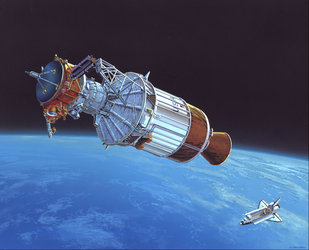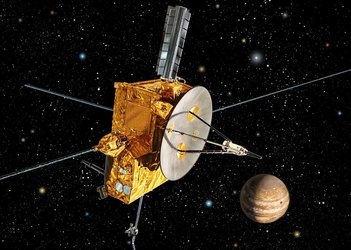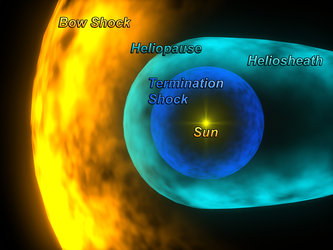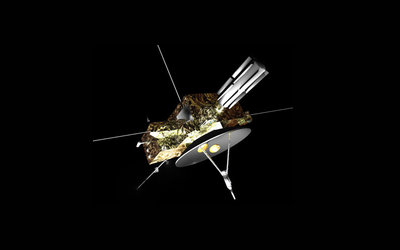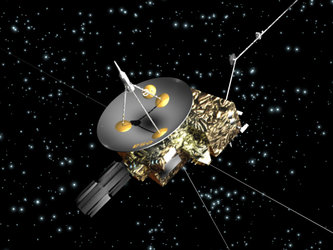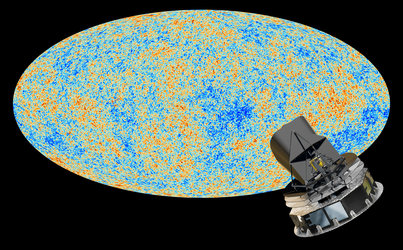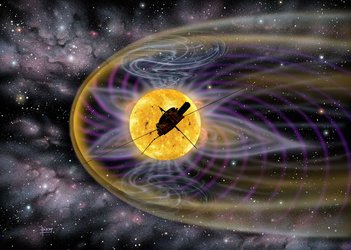Sun to set on Ulysses solar mission on 1 July
After over 17 years of operation, the joint ESA/NASA mission Ulysses will officially conclude on 1 July this year. The spacecraft, which studied the Sun and its effect on the surrounding space for almost four times its expected lifespan, will cease to function because of the decline in power produced by its on-board generators.
Ulysses has forever changed the way scientists view the Sun and its effect on the surrounding space. The mission’s major results and the legacy it leaves behind have been presented today at ESA Headquarters in Paris.
"Over almost two decades of science observations by Ulysses, we have learned a lot more than we expected about our star and the way it interacts with the space surrounding it," said Richard Marsden, ESA’s Ulysses Project Scientist and Mission Manager. "There will never be another mission like Ulysses,” he continued.
“Many solar missions have appeared on the space scene in recent years, but Ulysses is still unique today. Its special point of view over the Sun's poles has never been covered by any later mission, making Ulysses’s pioneering character still valid. This legendary spacecraft has served us extraordinarily well and it has certainly lived up to its mythical namesake's reputation.”
There will never be another mission like Ulysses. Many solar missions have appeared on the space scene in recent years, but Ulysses is still unique today. Its special point of view over the Sun's poles has never been covered by any later mission.
"Ulysses has been a challenging mission since launch," said Ed Massey, Ulysses Project Manager at NASA's Jet Propulsion Laboratory, California, USA. "Its success required the cooperation and the intellect of engineers and scientists from around the world. The diversity of our team was one of its greatest strengths."
That strength and diversity spilled over into the Ulysses spacecraft itself. The spacecraft and its suite of 10 instruments had to be highly sensitive yet robust enough to withstand some of the most extreme conditions in the Solar System, including two polar passes of the giant planet Jupiter.
“The main objective of Ulysses was to study, from every angle, the heliosphere, the vast bubble in space carved out by the solar wind,” said Ed Smith, NASA’s Ulysses Project Scientist. “The heliosphere separates the solar neighbourhood from the interstellar medium. Over its long life, Ulysses redefined our knowledge of the heliosphere and went on to answer questions about our solar neighbourhood we did not know to ask."
Ulysses was the first mission to survey the environment in space above and below the poles of the Sun in the four dimensions of space and time. It showed that the Sun’s magnetic field is carried into the Solar System in a more complicated manner than previously believed. Particles expelled by the Sun from low latitudes can climb up to high latitudes and vice versa, even unexpectedly finding their way down to planets.
This is very important as regions of the Sun not previously considered as possible sources of hazardous particles for astronauts and satellites must now be taken into account and carefully monitored.
Ulysses detected and studied dust flowing into our Solar System from deep space and showed that it was 30 times more abundant than astronomers suspected. Perhaps most remarkably, the spacecraft detected helium atoms from deep space and confirmed that the Universe does not contain enough matter to eventually halt its expansion.
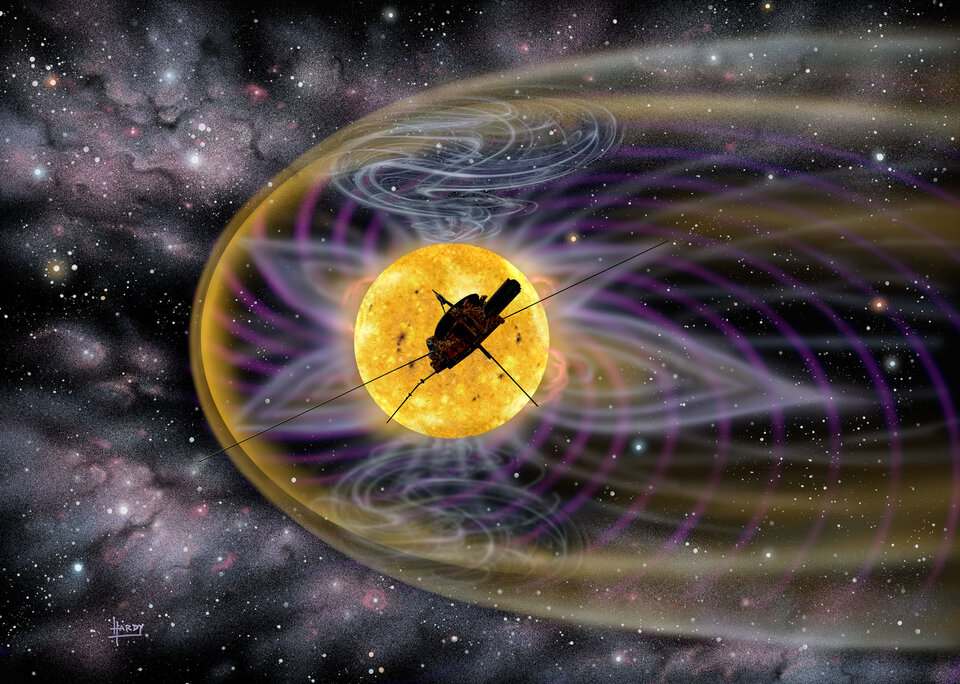
Hurtling through space at an average speed of 56 000 km/h, Ulysses has logged over 8.6 thousand million kilometres. The longevity of the mission is testament to a creative team of engineers who have risen to every challenge. As the power supply has weakened over the years, so they have come up with ingenious ways of conserving energy. Now, however, the power has dwindled to the point where fuel will soon freeze in the spacecraft’s pipelines.
"When the last bits of data finally arrive, it will surely be tough to say goodbye to Ulysses," said Nigel Angold, ESA’s Ulysses Mission Operations Manager. "But any sadness I might feel will pale in comparison to the pride of working on such a magnificent mission. Although operations will be ending, scientific discoveries from Ulysses data will continue for years to come."
“It is with enormous affection that we bid farewell to Ulysses. It has been a story of remarkable success and collaboration,” added David Southwood, ESA’s Director of Science and Robotic Exploration.
Notes for editors:
The Ulysses spacecraft was carried into low-Earth orbit in the cargo bay of Space Shuttle Discovery on 6 October 1990. It was then propelled towards Jupiter by a combination of solid fuel motors.
Ulysses flew by Jupiter on 8 February 1992; the giant planet's gravity bent the spacecraft's flight path downward and away from the ecliptic plane. This put it into a final orbit around the Sun that would take it past the Sun's north and south poles.
Ulysses is a joint mission between ESA and NASA. ESA provided the spacecraft, built by Astrium GmbH, Friedrichshafen, Germany (formerly Dornier Systems). NASA provided the Space Shuttle launch, the inertial upper stage and the payload assist module to put Ulysses into its correct orbit. NASA also provided the Radioisotope Thermoelectric Generator (RTG) to power the craft and its payload.
ESA’s European Space Research and Technology Centre (ESTEC) and European Space Operations Centre (ESOC) have been managing the mission in coordination with NASA’s Jet Propulsion Laboratory (JPL). Ulysses is tracked by NASA’s Deep Space Network. A joint ESA/NASA team at JPL has overseen spacecraft operations and data management. Teams from universities and research institutes in Europe and the United States provided the 10 instruments on board.
For more information:
ESA Media Relations Office
Tel: +33 1 5369 7155
Fax: +33 1 5369 7690
Email: media@esa.int




